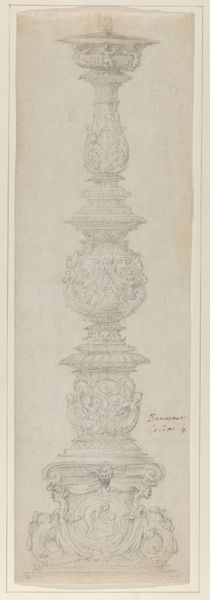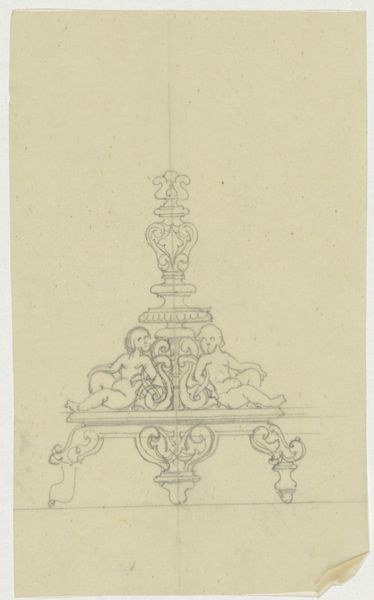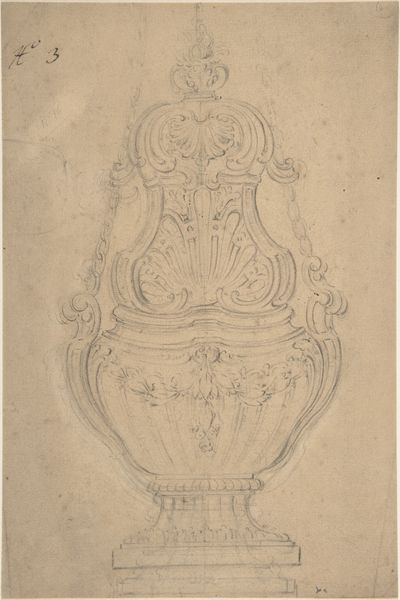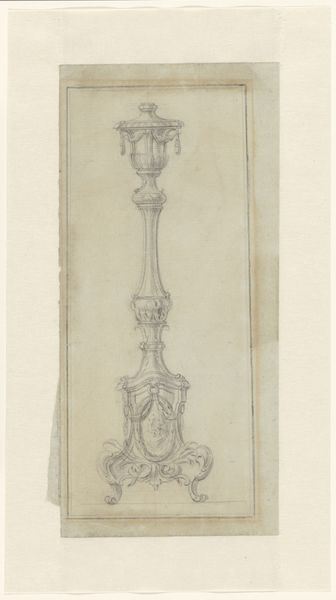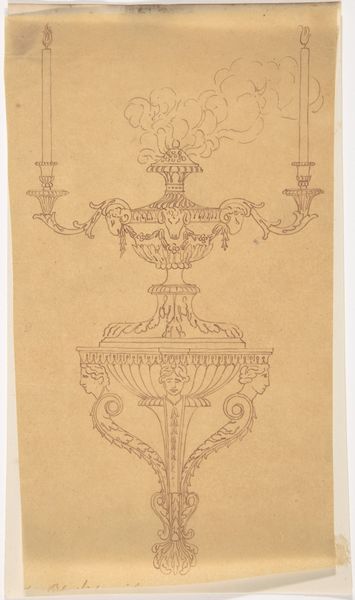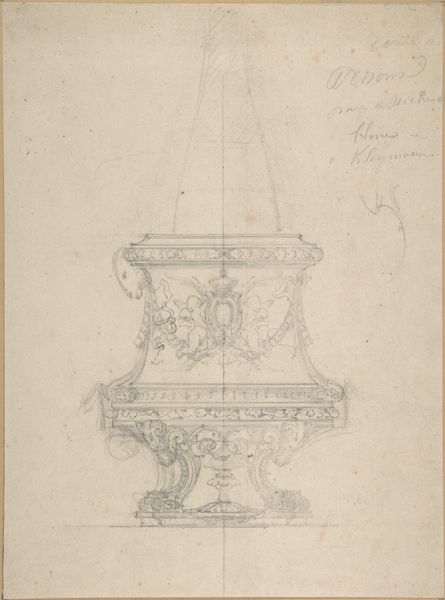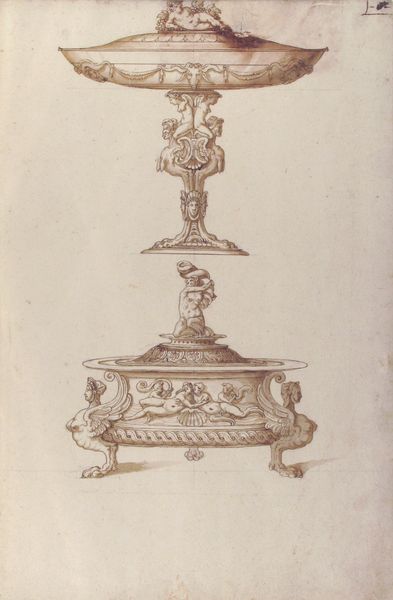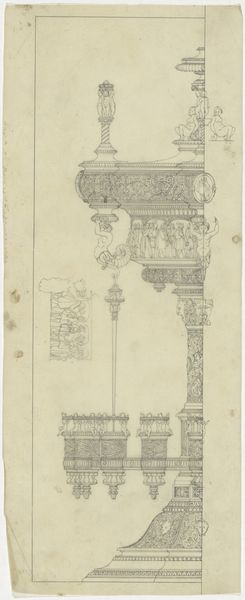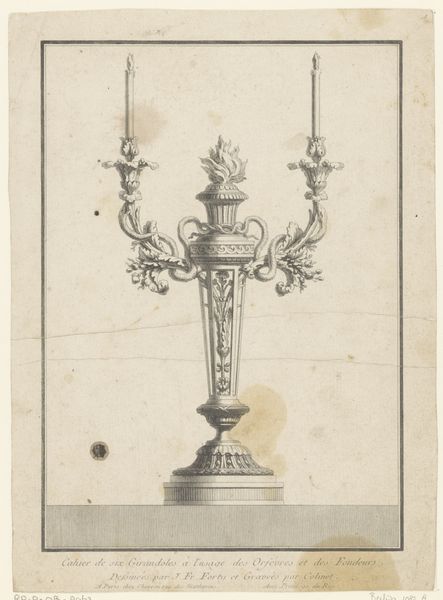
#
photo of handprinted image
#
aged paper
#
toned paper
#
light pencil work
#
old engraving style
#
fading type
#
ink colored
#
golden font
#
historical font
#
columned text
Dimensions: height 247 mm, width 190 mm
Copyright: Rijks Museum: Open Domain
Curator: Here we have "Ontwerp voor een coupe," a design for a cup, rendered around 1830 to 1840 by Jean-Jacques Feuchère. It is an exquisite piece, wouldn't you agree? Editor: Absolutely. My first impression is one of tremendous delicacy. The density of the fine lines gives it such texture; it almost feels as if the object were in front of us. The neutral tones are also worth noticing. Curator: Indeed, Feuchère was a master of detail. Note the intricacy of the ornamentation – the cherubs adorning the lid, the foliage spiraling across the body. The use of line to create form is simply masterful. It represents so clearly the luxury of the period! Editor: From a social perspective, this design speaks volumes about the aspirations and aesthetic sensibilities of the Biedermeier era. Cups of this design would be status symbols reflecting not only wealth but a desire for a harmonious, almost idyllic life. How would these vessels actually function at a social event, for example? Curator: I wonder what kind of materials and artistry could bring the subtle nuances of this sketch into real existence? From the balance of its curves to the positioning of figurative decoration, we perceive the idealization and celebration of order that underpinned so much nineteenth-century design. Editor: Considering how the decorative arts participated in promoting social class. How do you see the artist challenging conventions? Or rather, playing with them? Curator: While he doesn't radically depart from tradition, there's a distinct elegance in the composition, and the piece's meticulous execution elevates it beyond mere function, so much that even today its beauty makes it more than worthy. Editor: What's striking is the visual language—a kind of visual theatre representing specific themes and perhaps unspoken desires during a pivotal era. These pieces offer fascinating entry points to analyze how social conventions and identity interact in art and society. Curator: Indeed. What appears purely ornamental actually serves as a canvas reflecting culture and historical background. This allows for a deeper exploration into art, culture, and societal values in our minds. Editor: The close study of this artwork deepens our understanding of nineteenth-century aspirations and societal identity as a whole, revealing complexities through something as seemingly simple as the design of a cup.
Comments
No comments
Be the first to comment and join the conversation on the ultimate creative platform.
